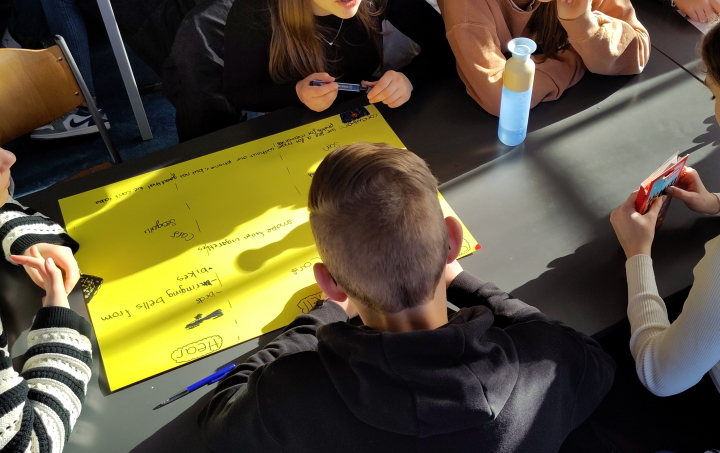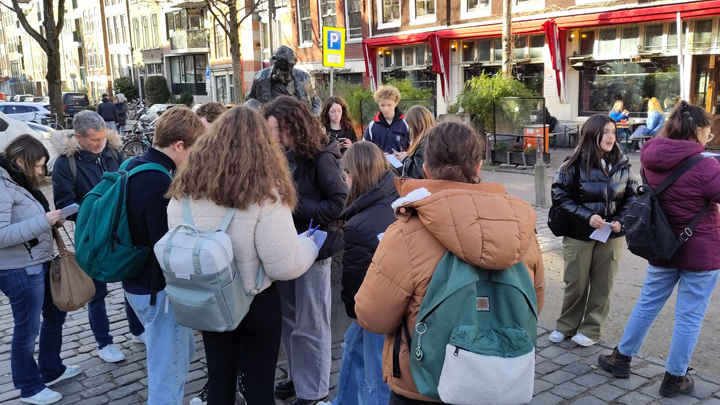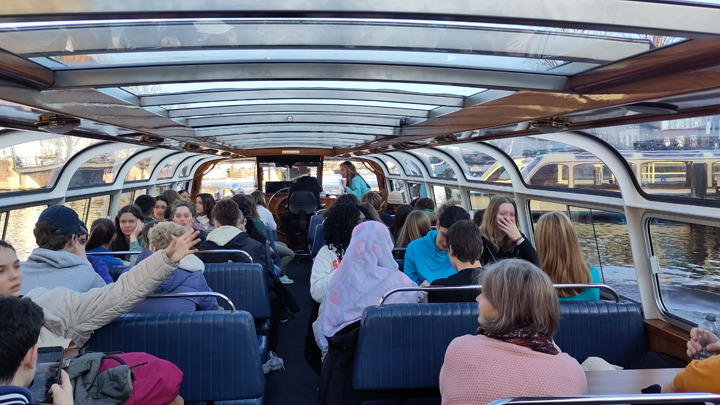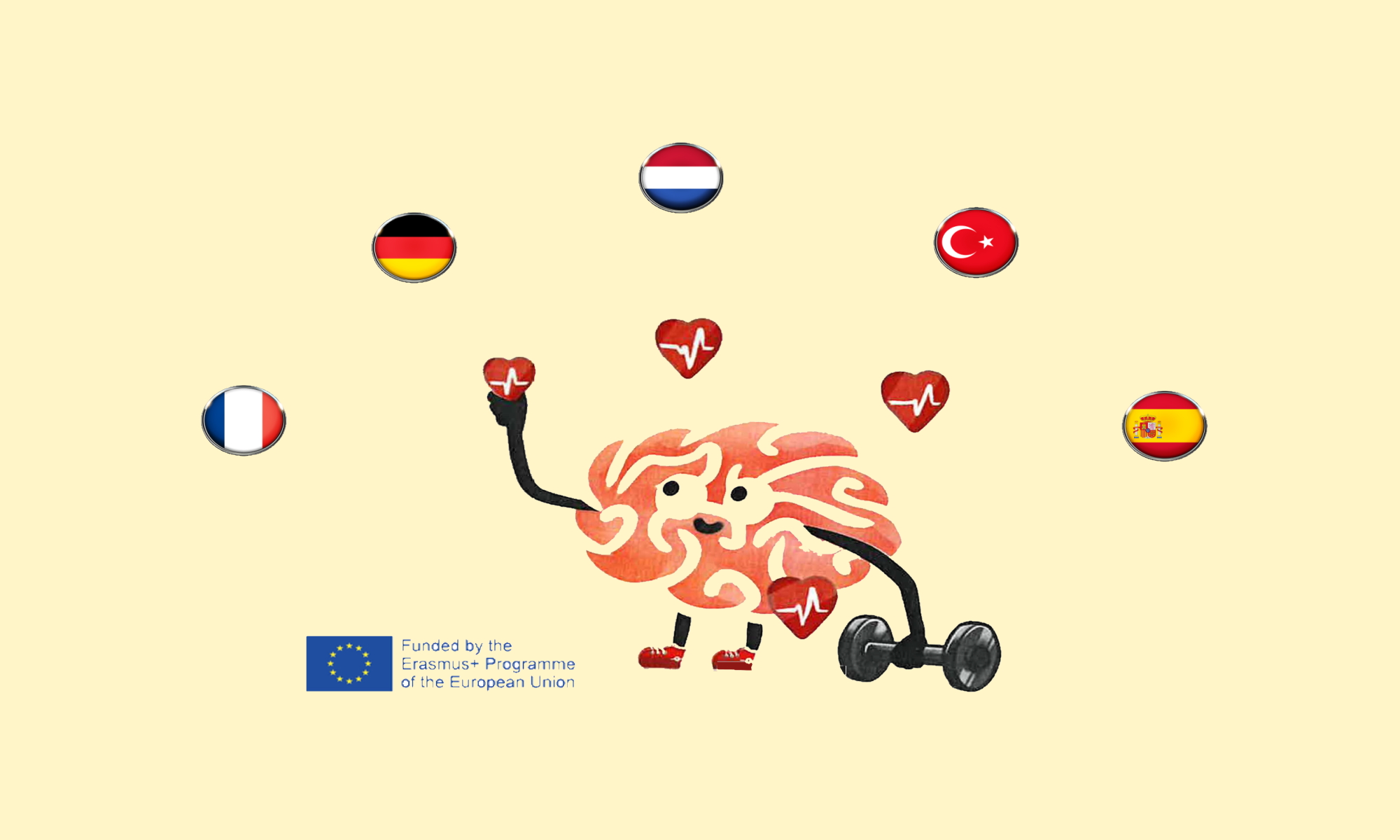The online world is a big part of students’ everyday life. The different activities in this section led students to (re-)discover the offline world.
Hear, See, Smell
On the first day at the hosting school, students were asked to leave their mobile phones in the classroom and then to explore the school building and its immediate environment with their senses. The task was to concentrate on things you can see, hear, and smell (and remember) when not constantly being side-tracked by messages etc. – and without being able to take pictures to remember. After returning to the classroom, students discussed and wrote down their perceptions in small groups. Together, they collected a large list of sensory impressions.

“Old fashioned” walking tour of Jordaan quarter
In the afternoon of the first day, a walking tour of the neighbourhood was scheduled. Students received a map, tasks and descriptions to guide them through the area. The subsequent evaluation of the activity revealed interesting observations.
When in an unknown area, we nowadays use online maps quite naturally. These maps can guide us correctly (if used correctly…) without large detours to the places we want to go to. This would then constitute a positive example of the use of mobile phones and the internet.
Orientation with the printed map proved to be very difficult for students. Finding their position on the map, finding the direction to walk into, was not always easy and took some extra time. To be honest, also in the past (in “pre mobile phone times”) people used to take a moment to orient themselves using printed maps.
On the other hand, students reported positively on the printed information of the tour (pictures and informative texts). The larger format (compared to the small screen of a phone) makes information more accessible. When following a similar tour with only their phones, the textual information would go unnoticed and thus get lost. The paper version also allows for easier collaboration / filling in of answers during this “treasure hunt”.

Canal tour – changing perspectives
A sightseeing tour of the city of Amsterdam mostly has touristic components. As the mobility is about going new ways, a perspective off the beaten path was chosen. During an hour-long canal tour only for the exchange group, both historic and modern aspects of the city could be discovered. Another positive aspect of mobile phones was focused on: taking photos without having to carry an extra camera. However, also the importance of not only blocking one’s view (either with a traditional camera or one integrated into the phone) was discussed.

